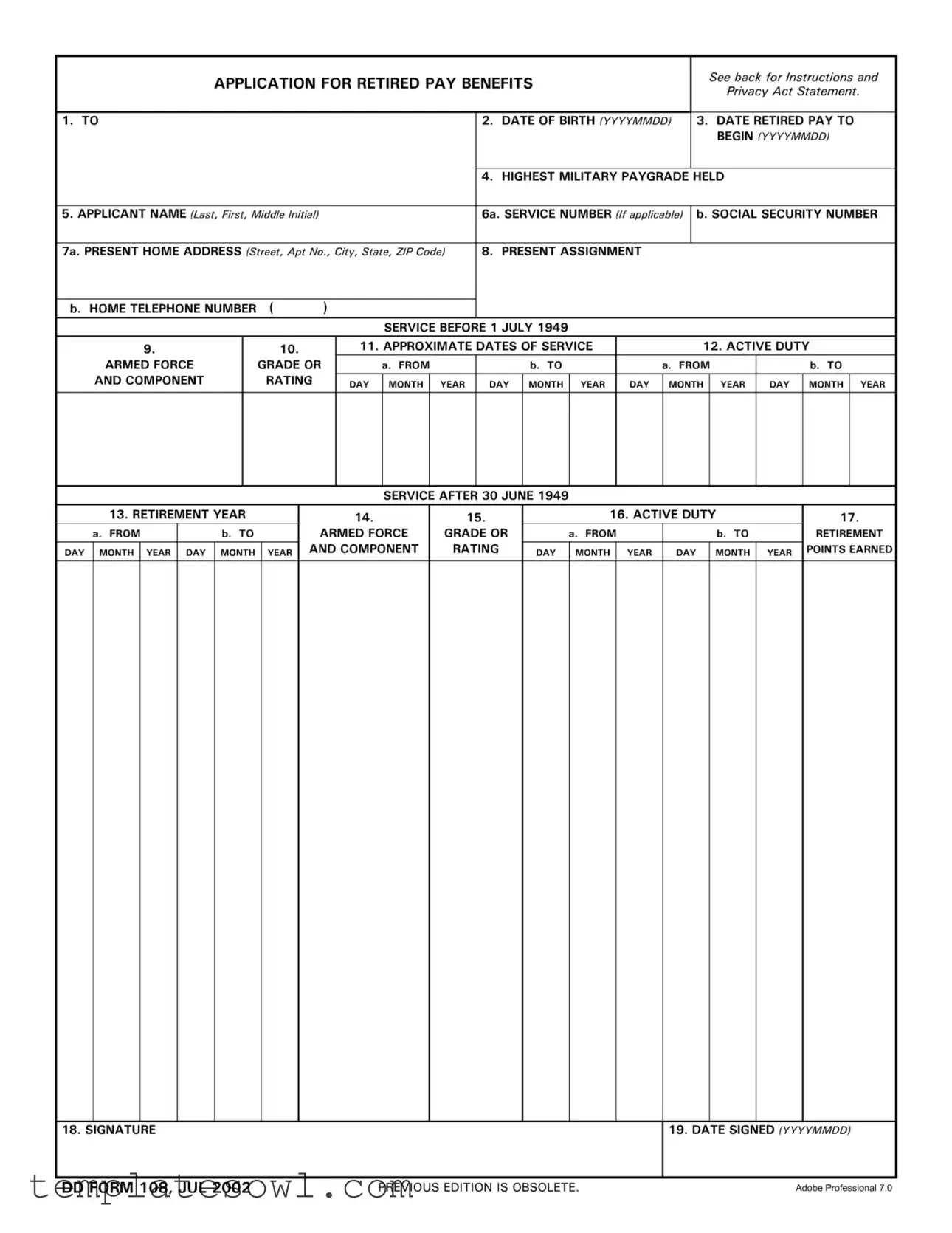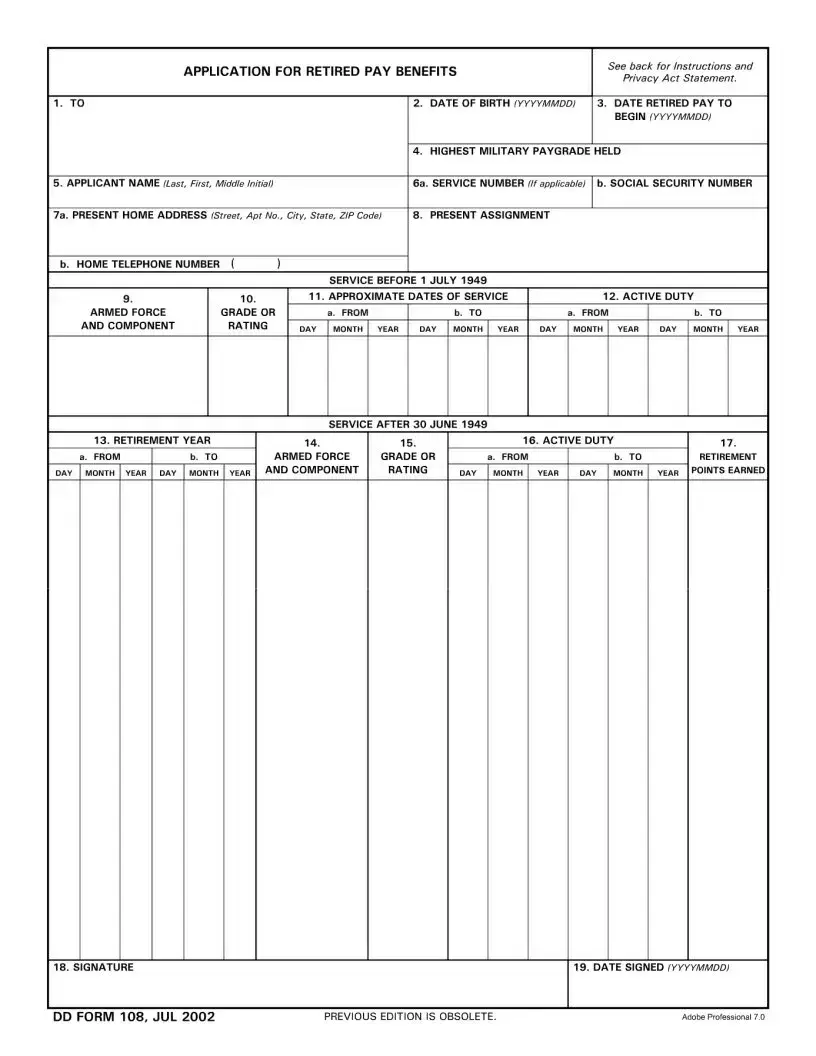What is the purpose of the DD 108 form?
The DD 108 form is an application for retired pay benefits. It's designed for members and former members of the Reserve Components to apply for their retired pay, which typically begins at age 60. The form collects essential information needed to verify eligibility and determine the effective date for retired pay to commence.
Who should fill out the DD 108 form?
This form should be completed by individuals who have served in the military and are approaching retirement eligibility. Specifically, it is for members of the Reserve Components looking to receive their retired pay benefits at age 60.
What information is required when completing the DD 108 form?
Essential information includes your name, date of birth, retirement date, military grade, service number, Social Security Number, service dates, and the specific component of the Armed Forces you served in. It’s important to provide as much accurate information as you can, as this will help verify your eligibility for benefits.
How do I submit the DD 108 form?
The completed DD 108 form should be submitted in one copy, or in duplicate if you are a member of the Navy. Ensure that the form is addressed to the appropriate Armed Force using the specified addresses based on your service. Typewritten or neatly handwritten entries are required.
Can I submit the DD 108 form without all required information?
You can submit the form without all information, but it is encouraged to complete it to the best of your ability. Providing as much detail as possible will assist in the review process. Missing details may lead to delays in processing your application.
Is there a specific format required for dates on the DD 108 form?
Yes, all dates must be entered in the YYYYMMDD format. This ensures clarity and consistency, reducing any errors that could arise from misinterpreted dates.
What happens if I fail to complete the DD 108 form?
If you do not fill out the DD 108 form, you will not receive retired pay. While completion is voluntary, without this application, your eligibility for benefits cannot be determined, and payments will not commence.
Where can I find additional information or assistance with the DD 108 form?
For further assistance, you can reach out to the personnel office of your last military service branch, or visit their respective websites. They provide resources and guidance on completing the form and the retirement process.


